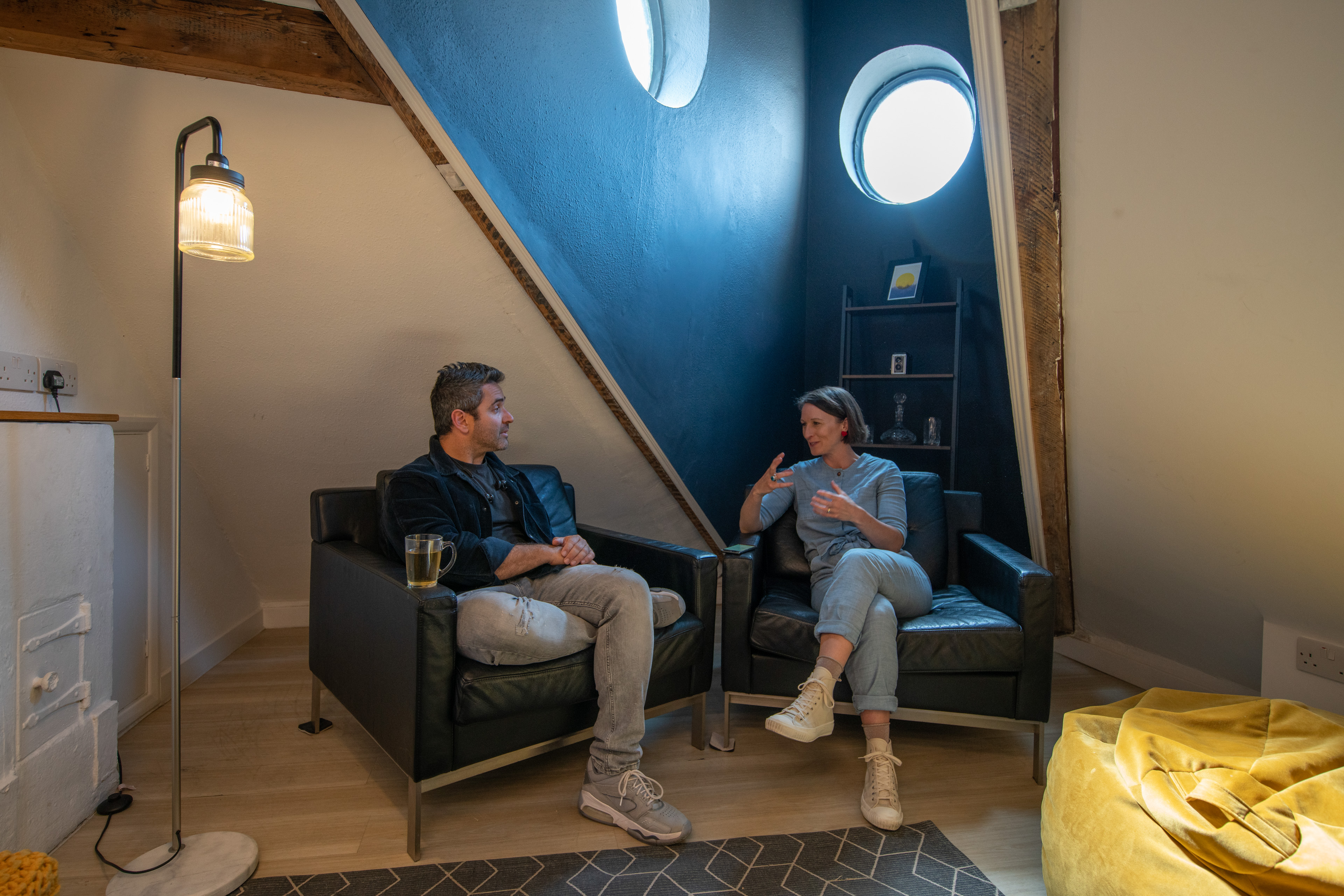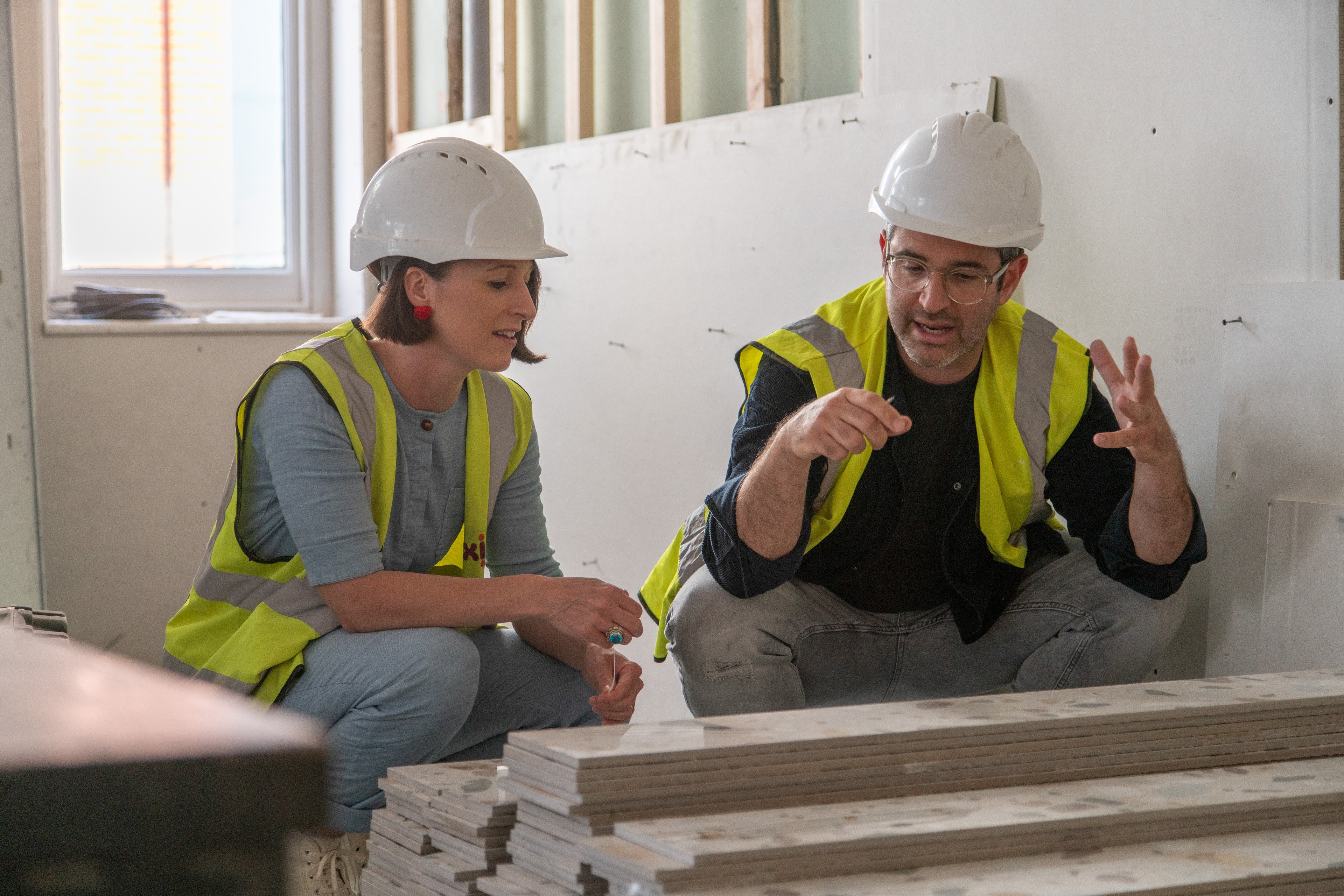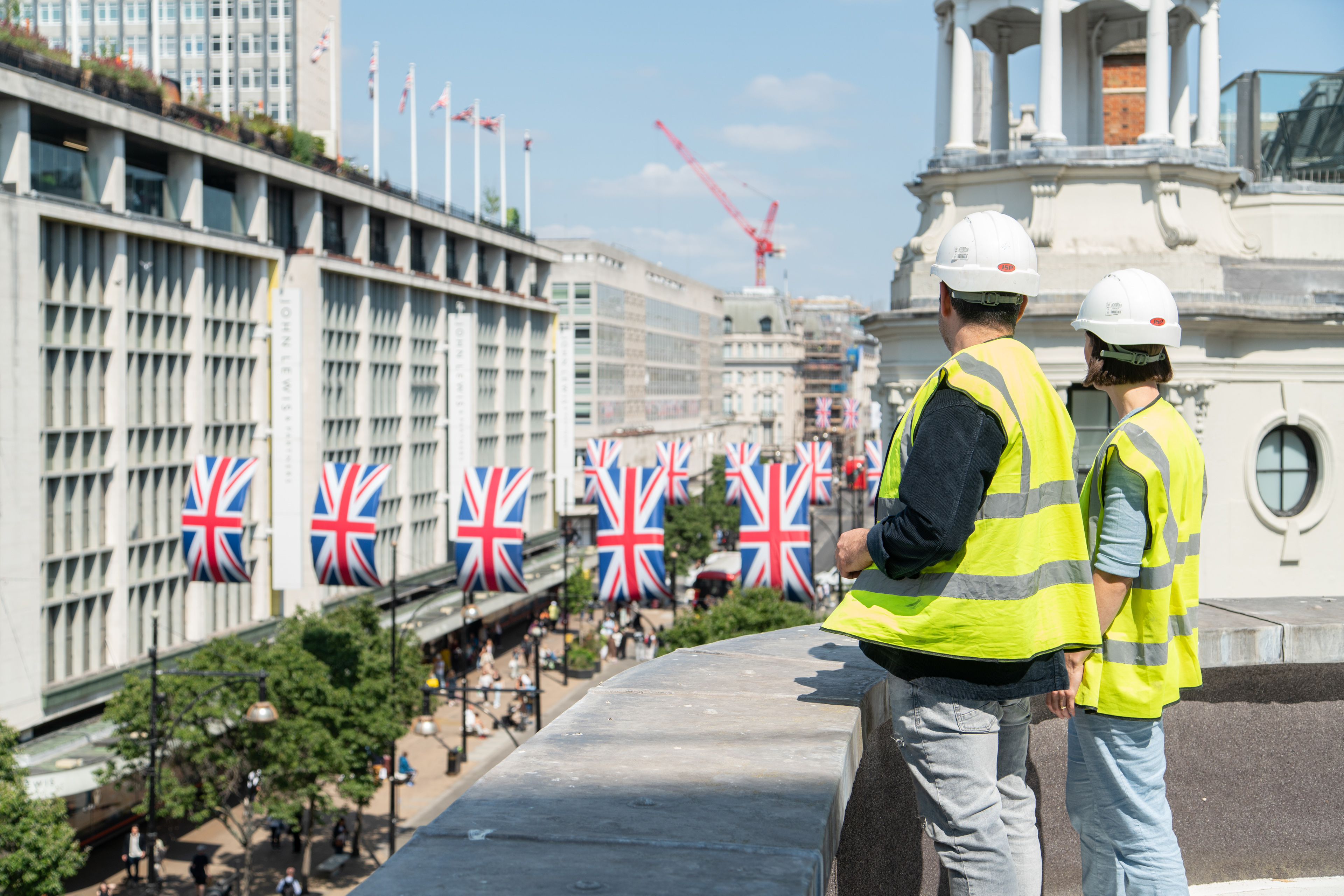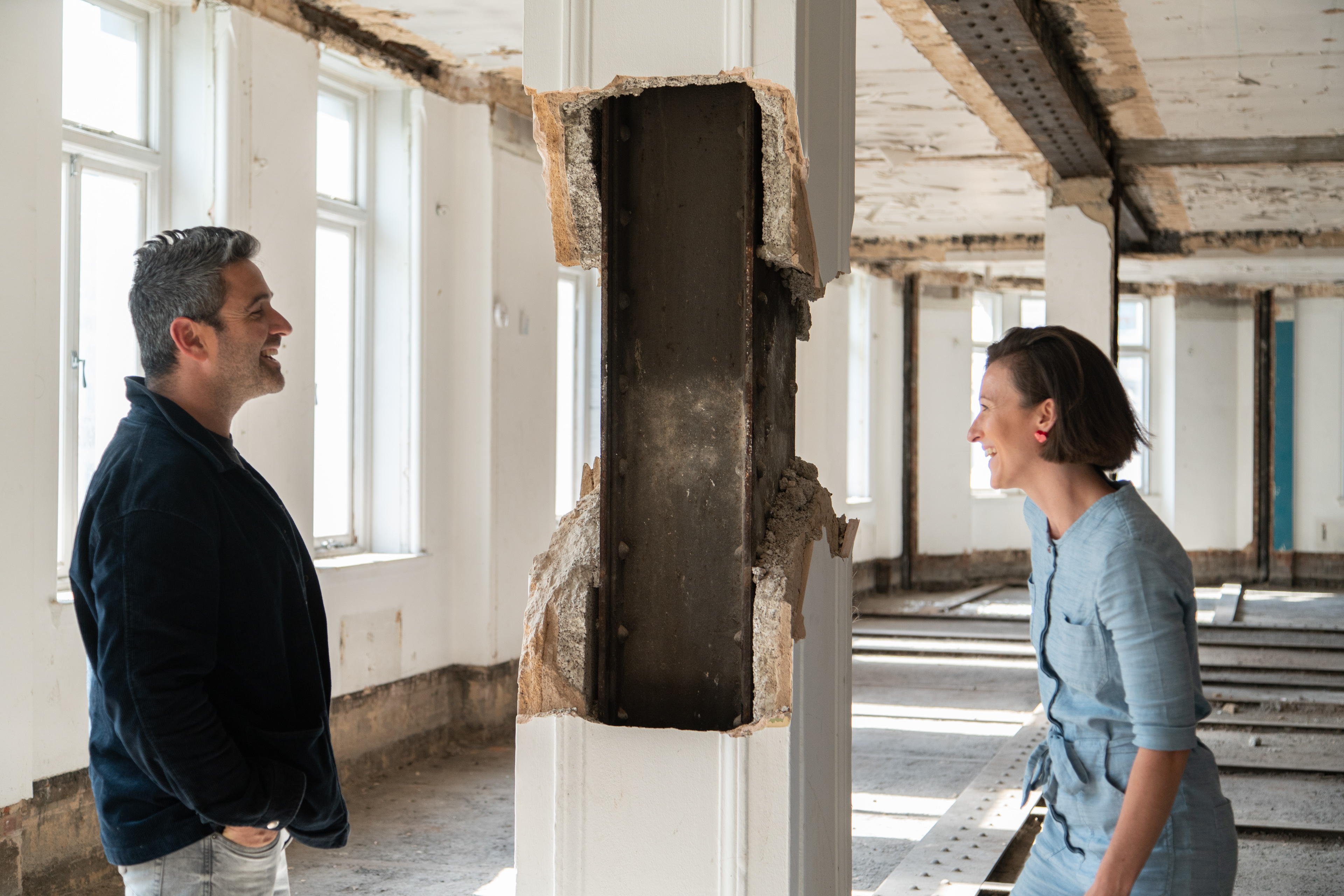We caught up with our co-founder and CEO to understand more about our roots as a business. About the exciting new additions to the Canvas collection, his vision for the future and why understanding what clients want is an “obsession”.
Ron Rosenblum has enough energy to light up London. His presence is huge. You cannot help but smile when he speaks. And there’s nothing corporate about this CEO. His confidence somehow puts you at ease. A mind you can almost visibly see fizzing with ideas is coupled with the focus and passion to make them a reality. He’s an artist at heart. A drummer. A father. A businessman. But above all, a human who understands other humans like you wouldn’t believe.
We’re standing on the roof of 321 Oxford Street. High-vis and hardhats on, we’re looking down on this iconic scene, flowing with red buses and rows of draped of Union Jack flags billowing in the sunlight. Below us is a building site with skilled workers and craftsmen busy transforming the space. But even in its raw state you can tell that it’s going to be special. Natural light pours in through the vast windows delivering a sense of calm to each room, now a Canvas trademark.
We de-PPE and head over to Canvas Duke Street, a short walk away. We climb to the very top of this meticulously restored Victorian town house to a calm haven hidden high above the hustle and bustle. The room itself is curious but beautiful. A low ceiling and exposed beams on one half that rises into a church-like apex with a high porthole window casting natural light around us. A quirk of the original architecture, lovingly repurposed. Leather armchairs. Plush golden velvet beanbags. The smell of fresh coffee in the air. We talk about the latest additions to the Canvas collection.

I ask Ron, what was so special about 321 Oxford Street that it just had to become part of the Canvas collection?
Ron stills his mind for a moment. He doesn’t rush his answer, unafraid of a pause to think.
“It’s an interesting question. This will actually be our 4th building on Oxford Street. The first location was the first in what we now call ‘the West Cluster’. Mayfair is quite unique to us and unique to our clients because in some ways it’s got a reputation for being elite or old fashioned. And what we’ve manged to create is a home for creatives within those areas, somewhere they maybe wouldn’t have felt welcome before. And the fascinating thing is it’s on one of the most well know retail streets in the world. We had a lot of fashion brands, cosmetic and jewellery companies starting to work from our buildings, and they’re always fully occupied.
“When I had the opportunity, pre pandemic to see 321 it was in a pretty horrific condition. In its previous life, it was the old Next shop on Oxford Street with a strange side entrance. It sat forgotten for about 30 years, if not longer. But when I came into the building, I fell in love. It didn’t feel like a decision I ‘made’, it felt like the building chose me rather than me choosing the building. There is so much character in there, it’s a beautiful building from the early of the 1900’s, with some art deco aspects to the architecture. It’s quite special.
“What’s interesting is that this really feels like a moment in time where we’re transforming from one organisation to another. Or maybe even one product to another. And this building is the tipping point between the two.”

That sounds exciting, can you tell me more about what you mean?
“Well, at the moment we’re working on multiple projects, one of which is 321 and we’ve already filled 70% of the spaces before we even open in September which is fantastic. Straight from here we’re going over to the Holborn building that’s 35,000sqft. Another is in Shoreditch which is 15,000 sqft. Plus two 2 larger buildings on the horizon with a further two projects in the pipeline. And it’s interesting to see the differences, but also the similarities between them. Because at the end of the day, what made us create this business is the love of architecture and the love of creating homes for businesses. And I think from the minute you walk into those buildings, regardless of the size of them, the authenticity of the bare bones of the buildings, the flooring, the natural light, the location, the character, the beauty makes them all special.
“The fact that people forgot about those buildings is almost a crime in my eyes. That’s why I say they choose me rather than the other way around. It feels like a purpose or a mission rather than a drive to create more revenue for the business.”

Do you think that’s the reason you feel so personally responsible for the buildings and the reason you get so involved in the design choices for the spaces you create?
“Absolutely. And it’s not a co-incidence that we’re sitting in one of my favourite rooms in the collection, what I call the ‘submarine room’. So, in 2018 we found this building [Duke Street], a beautiful four-story 19th century building. The fascinating thing about it was I remember coming up to the fourth floor and finding this space that had been left untouched for over a hundred years. Now it’s meeting rooms and space for great global business that come here to create the products of the future. And thinking that I have been part of the process to revive those buildings and enabling those companies to work here and to create their amazing products is something I’m very proud of.




